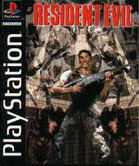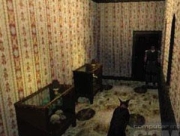President Evil - A Review
Originally published 2006, April 3.
Originally planned to be a highly-original politically-themed adventure title, President Evil met an unfortunate fate part of the way through it's development, and what came out of it was a confusing mess of a game. The director, Paul WS Anderson, had been making good progress on the title, with most items and puzzles programmed and set in place, when all of a sudden he had a nervous breakdown, believed to have been caused by his obsessive playing of too much Apple IIe in his spare time. Anderson's apparent addiction to Logo led to the adoption of a new control scheme, abandoning the typical GO NORTH, and GO OUTSIDE navigation method for a "turn-based" system, where a player could turn left, turn right or walk in a straight line. Unfortunately, there was not enough time to replace the main character models with Logo's turtle, nor was the ability to draw lines ever included in the game. This half-hearted system left many adventure game ventures confused and dismayed.
 |
Even the box art had a typo |
 |
You are in the hallway. You see a zombie dog Response? |
Ultimately, President Evil ended up being fairly profitable, despite all of these shortcomings. Many sequels have been released in the meantime, all of which have followed in these missteps. It remains to be seen if the world will ever witness the majesty of the original vision - a great game that could have been.
